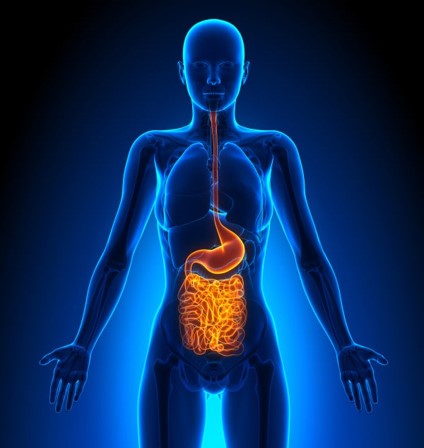Publications Hub, EuroPerio, Systemic health, Article
The mouth is not Vegas—what happens there does not stay there
22 April 2025
At EuroPerio11, a joint symposium by the EFP and the American Academy of Periodontology (AAP) will focus on the links between the oral and gut microbiomes. Purnima Kumar, who will speak in the symposium, gives her view on the matter and highlights the latest findings on how one environment reflects changes in the other.
“The mouth is not Vegas,” is something I tell my patients a lot. The attitude of “It’s only gum disease” or “My gums are just bleeding, but it doesn’t hurt” is one that clinicians constantly come up against in our patients.
The reality is that we are not simply treating things that happen in the mouth. We treat stuff in the mouth so that we can preserve the overall health of our patients. Just as your cardiologist treats your heart so that your liver or your spleen function stays well. It is not just the heart, it is not just the liver, it’s not just a finger—everything is a part of your body, and it is all connected.
As dentists, we have often been isolationist in our approach to treating things that happen in the mouth. We are very procedure-based in that we do fillings or we do surgeries, but we don’t think about treating oral diseases and the impact that these can have on systemic health.
So, the idea of “the mouth is not Vegas” is simply about trying to “put the mouth back into the body” because what happens in the mouth spreads to the rest of the body.
The mouth is a very impactful organ. It is the first interface between the external environment and the human physiology inside. The mouth plays multiple and very significant roles in the body, it serves many different functions, and it is therefore subject to many different exposures, such as kissing, eating and drinking, smoking.
The mouth has been evolutionarily conserved to be highly protective, and the mouth will always be full of bacteria. You are never going to rid the mouth of bacteria because this is how the oral environment—the inside-outside interface—happens. And the mouth has to decide which bacteria can stay in the mouth and which have to be rapidly removed from this environment before they can cause harm.

It all starts in the womb
The immune system of the mouth is evolutionarily programmed to recognize what is familiar. We have recently discovered that immune education begins in utero: when a baby is born, it acquires its oral microbiome from its mother. If the mother’s oral cavity is not healthy, if it contains pathogens, then the child is already set up for disease. If the mother smokes, if she vapes, if she has gestational diabetes conditions that put her oral health at risk, the baby is automatically at a higher risk.
We then looked to see if these bacteria spread from the mouth to the rest of the system. And we found that the transmission of bacteria via the serum is nonstop, it happens constantly. We have looked at this when someone is brushing their teeth properly, when they’re absolutely healthy and are just receiving a regular cleaning, and when they are people with gum disease receiving a deep cleaning. We find that bacteria are constantly moving from the mouth to the bloodstream.
We swallow one-and-a-half litres of saliva every day, which means a lot of bacteria are moving from the mouth into our gut. But they don’t all survive and thrive there. The gut is a very select community—unlike the mouth, it is not an outward-facing environment, so it can be selective.
Leaky guts
What happens when the immune system breaks down? We studied the autoimmune disease Behcet’s disease, a rare disorder that causes blood vessel inflammation throughout the body. Where certain immune privileges are revoked, we find that bacteria in the mouth and the gut start to look similar.
This happens because the barriers in the gut start becoming leaky, and bacteria move via the bloodstream into the gut and via the gut into the mouth. This potentiates the inflammation. Behcet’s disease automatically induces a lot of inflammation. And when you have this kind of unfamiliar bacteria that are not supposed to be in these habitats, inflammation happens.
How does the mouth recognize bacteria? It recognizes what is specific to itself—through in utero immune education, through habitat specificity, through certain very fundamentally conserved, ecological principles. It’s like you don’t expect to see Douglas firs in the Amazonian forest because habitat specificity.
And what happens in the mouth has very large, very far-reaching consequences, not just in the current generation, but also the next generation. When I ask a patient “How long have you been smoking or vaping?” I’m thinking the question I should really be asking you is, “was your mother smoking when she was pregnant with you? Did she vape? Was she on antibiotics?” That is not my clinical training, but I do think that focusing on maternal health is an important element in controlling the health of the next generation.
To sum up, the key questions are when your immune system is modulated—either because you have an autoimmune disease, you are taking an immunosuppressant medication, or things are happening to you—how does that affect your oral cavity and how does that change the oral-gut axis? And when you have poor oral health, how does impact your health and, if you are female, the health of the next generation?
See also: Bottoms Up! How can gut microbiome research benefit periodontitis patients?
Biography

Purnima Kumar is the William and Mary K. Najjar Endowed Professor of Dentistry and Chair of the Department of Periodontology and Oral Medicine at the University of Michigan, and the principal investigator of the university's Oral Microbial Ecology Laboratory. She has authored over 100 papers and book chapters and serves as the associate editor of Periodontology 2000 and Nature Scientific Reports and as the senior editor of Microbiome. She is the Chair of the AAP’s continuing education oversight committee and was a member of its taskforce for future science. She also serves on the board of directors of the Osteology Foundation and the American Academy of Periodontology Foundation. In addition, she serves on several taskforces for women in science, women in surgery, and women in STEM.
EFP-AAP Joint Session: Bottoms up! What can we learn from gut microbiome research to benefit periodontitis patients? EuroPerio11 | Vienna | Thursday 15 May, 10-30-12.00
EuroPerio11 | Vienna | 14-17 May: Information and Registration




